August 20, 2013 – November 5, 2013
Field Report


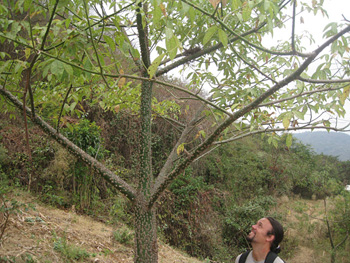
In late August, a GPS site map of the revegetation sites from 2005-2013 was completed with the initiative taken by field research intern Joffrey Iboud. After several months of plotting GPS coordinates at all of the sites, the data was entered into a computer with maps that were acquired from the city government. The result is a comprehensive view of the past eight years of Planet Drum’s revegetation work in and around Bahia de Caraquez. Although in some cases survival rates of certain sites were low, each site that we visited has some signs of significant vegetation growth from trees that were planted. Quite a few of the sites had trees that were from a few to several meters tall, as well as certain sites that had excellent survival rates (over 75%). The map makes visible years of hard work dedicated to native plant revegetation. Many thanks to Joffrey for providing the motivation and expertise to make this happen!
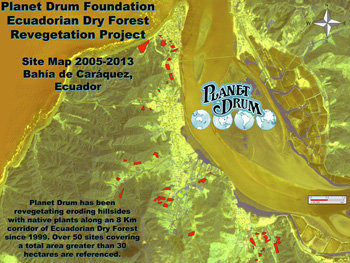
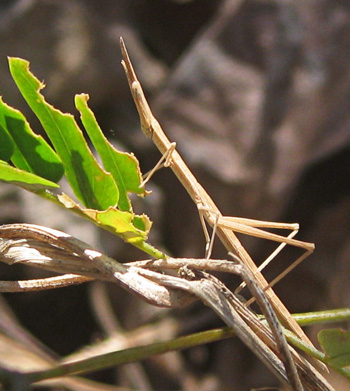
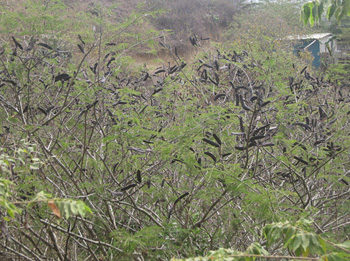
There have been multiple opportunities for seed collection during the past couple months and seeds of Algarrobo, Aguacate, Ceibo, Bototillo, Guachapeli, Guarango, Mandarina, Naranja, and Pomarosa were collected. During our daily activities we are constantly on the look out for seed sources, whether they may be friends who help us collect them or trees that are ready to be harvested. In most cases, the seeds are dried and stored away, though some are tossed into seedbeds for germination. Multiple seedbeds at the greenhouse are bursting with seedlings in various stages of readyness to be transplanted. Production at the greenhouse continues to be excellent and we are on course to surpass 8,000 trees for 2013.

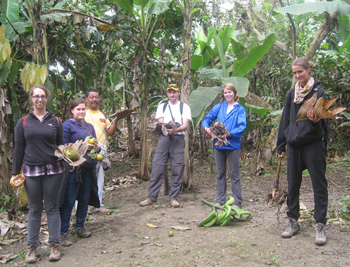
Since this is the dry season, precipitation has been non-existent and we’ve been watering at the three revegetation sites that were planted this year: Bellavista, Bosque en Medio de las Ruinas, and Universidad Catolica. In order to ensure a high survival rate, the sites are watered at least once a month. Since we selected only the most drought resistant trees to plant at these erosion control sites, the survival rates have been very good (>80%).
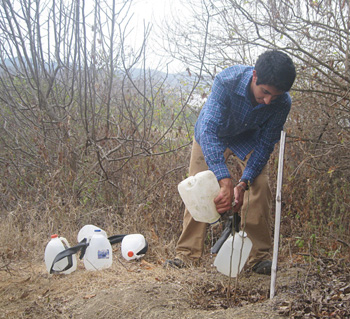
The most significant development recently has been the progression of the revegetation workshops that are held at the greenhouse. In addition to the Montufar School, which has been sending groups of students since early June, students from the Sathya Sai School have been collaborating with the project as well. The model that is being developed for combining education and field practice is turning into a reincarnation of the Bioregional Education Program (BEP), which operated from 2005-2011. Due to a variety of factors (including funding and logistics), that program was suspended after 2011, and we’ve been looking for new opportunities to do ecological education work with local children ever since. The current revegetation workshops are exactly that. In many ways, the workshops combine the successes of the old BEP, while avoiding many of the hurdles that the BEP faced.
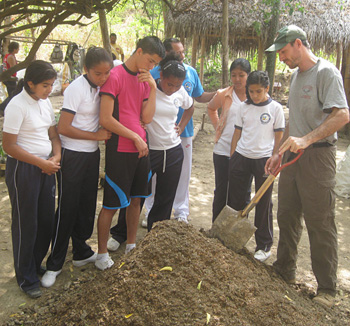
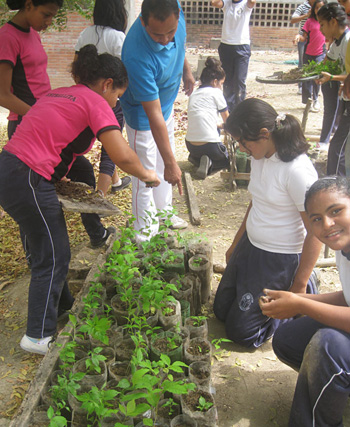
During the workshops, students participate in an interactive lecture and tour of the greenhouse where they learn about native flora and fauna, bioregional principles and ecological restoration techniques. Afterwards they directly assist the Revegetation Project by transplanting baby trees from the seedbeds to bottles, which they help cut and fill with soil.

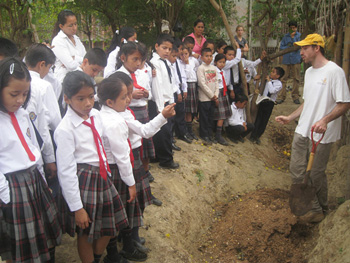
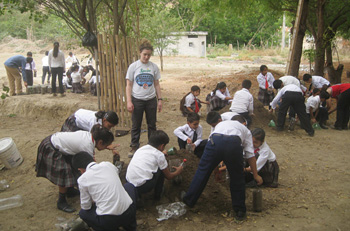
In a single session, the students have the opportunity to learn outside of the classroom setting and participate in hands-on activities. The transplanting work that the students do is obviously hugely beneficial to the revegetation project since a large quantity of trees are transplanted at once. By collaborating with a handful of education institutions, it could be possible to further increase production at the greenhouse, while simultaneously increasing the exposure of the project to local students.
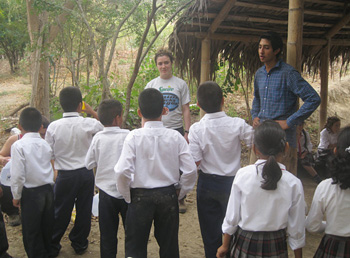
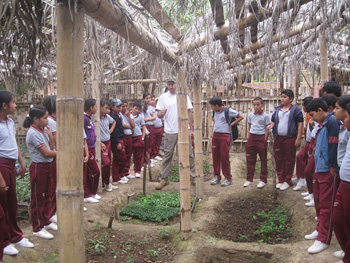
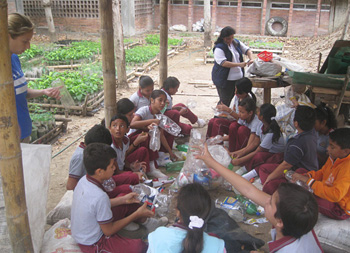
The greatest success of this model of ecosystem restoration and environmental education is that the local population becomes fully integrated into the process. The locals are the ones who help produce the trees that will then be donated back to the people. Along the way, they learn about revegetation techniques and the importance of the Dry Tropical Forest ecosystem.
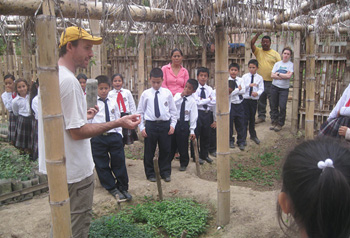
Working with the students is exciting and it is fun to hear their input and perspectives of their environments. Many of the students have a surprisingly extensive knowledge of native plants and animals. They speak with enthusiasm about gardening or working with plants. Others are already somewhat familiar with producing compost. Part of the tour includes a short walk into the forest behind the greenhouse through a revegetation site. Many of the students have never set foot into the woods before, and some of them even believe that goblins or spirits inhabit the forest. It is special to be able to expose them to new experiences. Nearly all of the students at some point during the morning ask when they will be able to return to continue collaboration.



I look forward to developing this aspect of the project in the coming months and for 2014. Response from the students and teachers thus far has been very positive, which bodes well for expansion.
Pásalo bien,
Clay

Reader Interactions